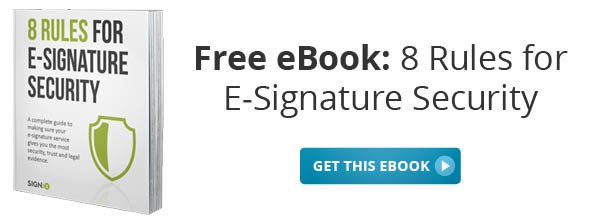What exactly is encryption and why is it important?
Did you know that encryption technology plays a major role in safeguarding our public and private networks? Encryption, generally speaking, is the process of protecting information so that it is unreadable by anyone except those with the special knowledge (aka “key”) that allows them to view the information in its original form. Encryption is critical because it securely protects data such as e-mail, medical records, credit card information, confidential corporate information, legal documents, and basically anything else you wouldn’t want someone to have access to.
When it comes to learning about encryption, you might feel like you need a decoder to figure out what it means in the first place. The language that goes along with a standard explanation (i.e., AES 256, digital certificates, revocation, SSL…oh my!) is confusing enough to make anybody without a computer science degree scratch their head. The trick is finding a vendor that can not only explain it to you in clear language, but deliver to you a product that protects your critical data. Thankfully, SIGNiX is chock full of developers and tech geniuses who not only understand what needs to happen to keep your documents safe, but also understand how a document needs to be encrypted and protected to make it legal and independently verifiable for the long term.
When a document is created and loaded into a SIGNiX e-signing process, it’s delivered via a secure channel protected by a standard known as 256-bit Secure Sockets Layer (SSL) “in transit.” As the document moves through the signing workflow to different reviewers and signers, a unique secured web link is sent to each individual signer to ensure the highest level of security. From the very beginning of the process to the time the document is signed, sealed, and delivered, it is encrypted whether in transit or at rest.
As the document moves down the encryption assembly line and is ‘at rest,’ it is encrypted with a standard known as the Advanced Encryption System. AES comes in 128-bit, 192-bit and 256-bit strengths and SIGNiX uses the highest level, 256-bit, to protect your information. In fact, the U.S. Government requires at least a 192-bit encryption key for the most secure information. A simple 128-bit key can have more than 300,000,000,000,000,000,000,000,000,000,000,000 key combinations. Imagine how secure SIGNiX’s 256-bit encryption is!
And that doesn’t begin to include the work we do with encryption and digital signature standards at each signature and initial placed on the document. Because of the great care we take to implement industry standards, each document, signature and initial created through SIGNiX is independently verifiable and tamper-evident.
To learn about the origin and development of encryption, check out this infographic on The History of Encryption by egress.com.png) History of Encryption infographic created by Egress providers of email and file encryption software.
History of Encryption infographic created by Egress providers of email and file encryption software.
Sources:
http://www.lantronix.com/wp-content/uploads/pdf/Encryption-and-Device-Networking_WP.pdf
http://www.egress.com/history-of-encryption-infographic/
https://en.wikipedia.org/wiki/Encryption
http://www.hacker10.com/computer-security/how-does-encryption-work-encryption-for-dummies/
%20formatted-1.png?width=2528&height=739&name=SIGNiX%20Logo%20Main%20(white)%20formatted-1.png)

